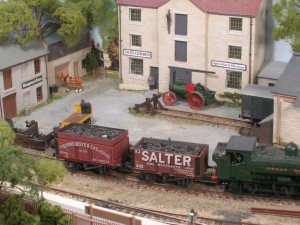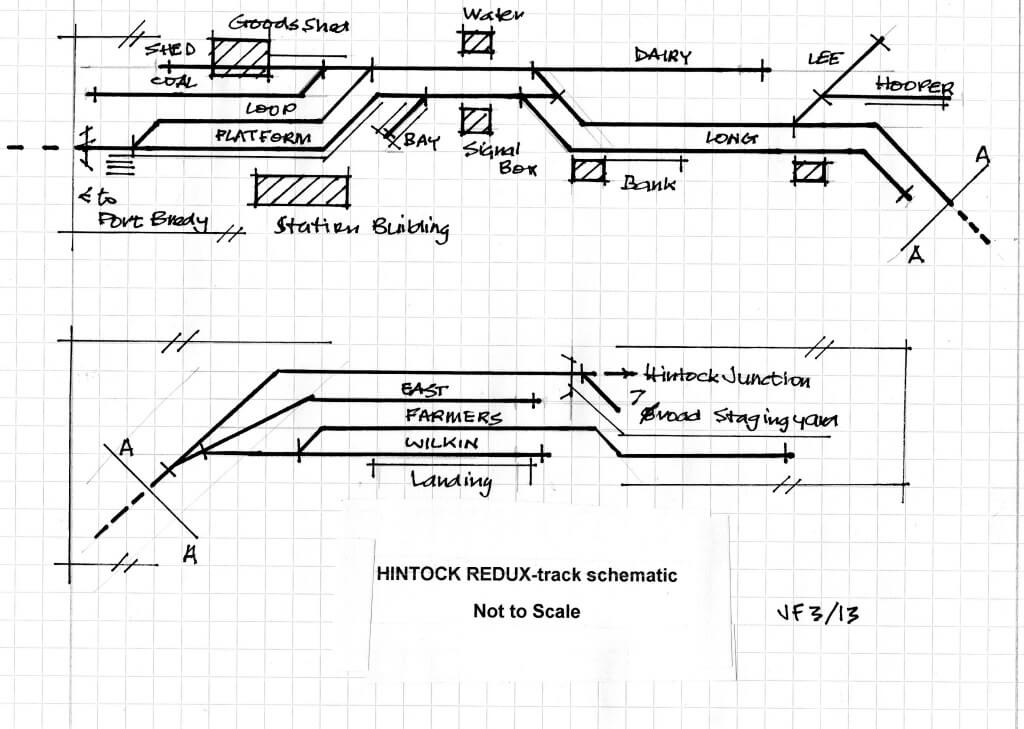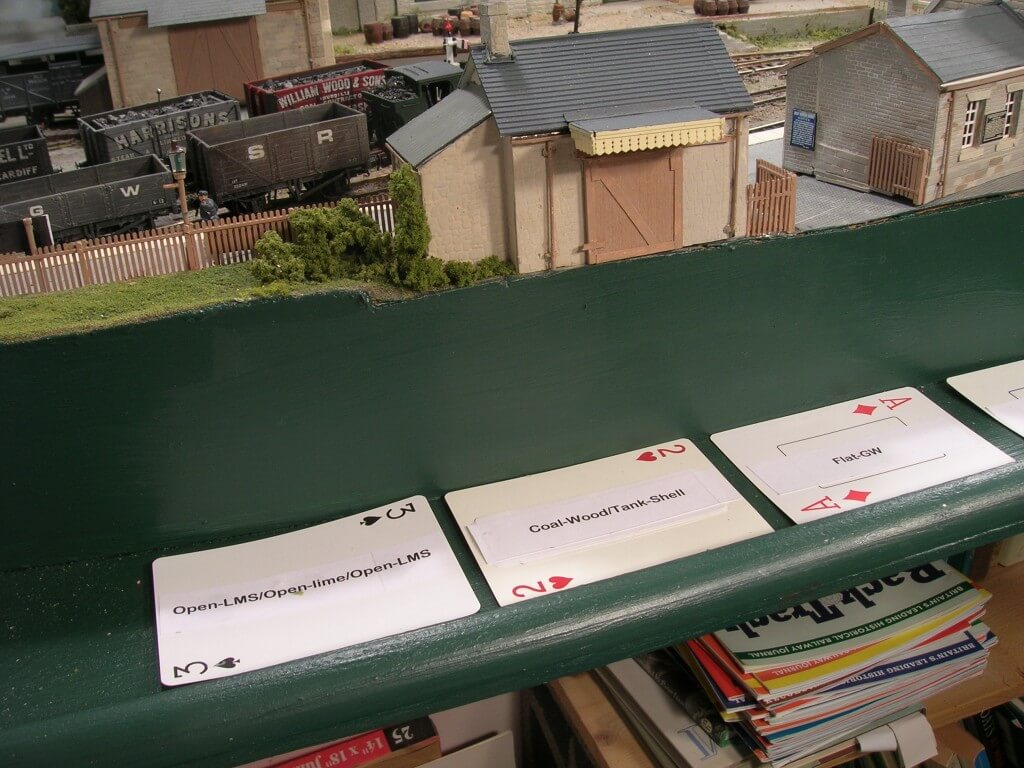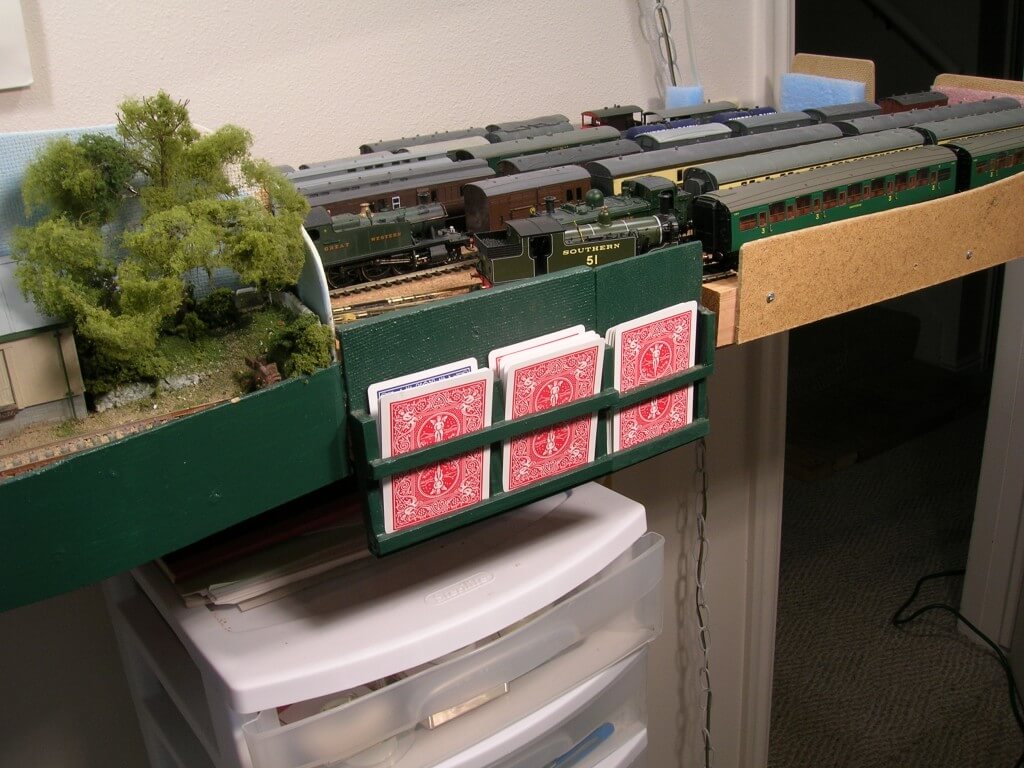Operating or shunting a model railway is the best part of building and owning one. My shunting is random and systematic, not as you please.
For it I use order and method applied in a random and systematic manner. No, it’s not a contradiction in terms. (My methods are featured in a comprehensive article in RM 9/2013.)
The number of wagons in a train is random and whilst the Staging Yard roads will accommodate more than Loco+8 wagons and brake van I restrict them to that. Anymore seem out of keeping with the general theme of the layout. I employ 40[1. With any number in excess of 40 the layout appears overburdened with wagons and becomes clumsy to shunt. With also up to 16 wagons ‘away’ the yards sidings with 24 wagons remaining have an open and, I think, more authentic appearance.] or so wagons and these I make up into rakes of 3, 2 and singletons. For each rake or singleton I have a card. Cards for wagons at ‘home’ in Station and Sheepcroft Yards, are kept there, those for wagons ‘away’ in trains in the Staging Yard, are kept there. I have holders for these. This is a schematic diagram showing all respective sidings. Each has its name.
To make up a train I draw cards from a shuffled pack of ‘home’ cards to determine the make up of an outgoing train and, say they indicate rakes of 3+3+2 the train is made up accordingly. The cards for those are transferred to the SY ‘away’ holders, the incoming wagon cards to the ‘home’ pack. If, however, the cards drawn were 3+3+3=9, the last card is discarded and the train runs with 6.
Shown below are typical cards. I use playing cards because they are easy to read, wear and, shuffle well.
This method in various forms I have been using for years. It is not difficult to set up, possesses a random quality and requires thought and mental dexterity in its application. One big benefit is that once set up it needs no further work upon it, it is self perpetuating.
At a causal glance it might appear complicated, but it’s not.




Enjoyed your Port Bredy story in RM Jan 2018 issue , John. I share your ‘operating philosophy’ on my N-gauge layout. Regards, Keith Bingham.
Glad you enjoyed it Keith and made the effort to say so.
As I said in the article there’s no fun in just “playing trains”. Operation as you and I enjoy is the essence.
My regards,
John.
I like your idea of using cards takes a lot ofwondering how to do it and gives loads of shunting problems good on yer
Dear Mr Flann,
I very much enjoyed your article describing your system. My high school part-time job on the Canadian Pacific Railway was with the heater car service crew.
On any given shift between 10 pm and 4 Am we were tasked with servicing the reefer cars that came through our yard (a divisional point that exchanged engines, and crews plus serviced the heater cars.)
My point in this message is to state that on any given day there was a randomness to the number of cars we had to service. On a busy night we might fill the alcohol tanks/charcoal furnaces on upwards to 30 cars whereas on a slow night for instance we might get a total of only 7.
Business was random. I have always wanted to include the random structure to my operations and I see you have endeavoured to include this bit of realism within your system. Regards Rick